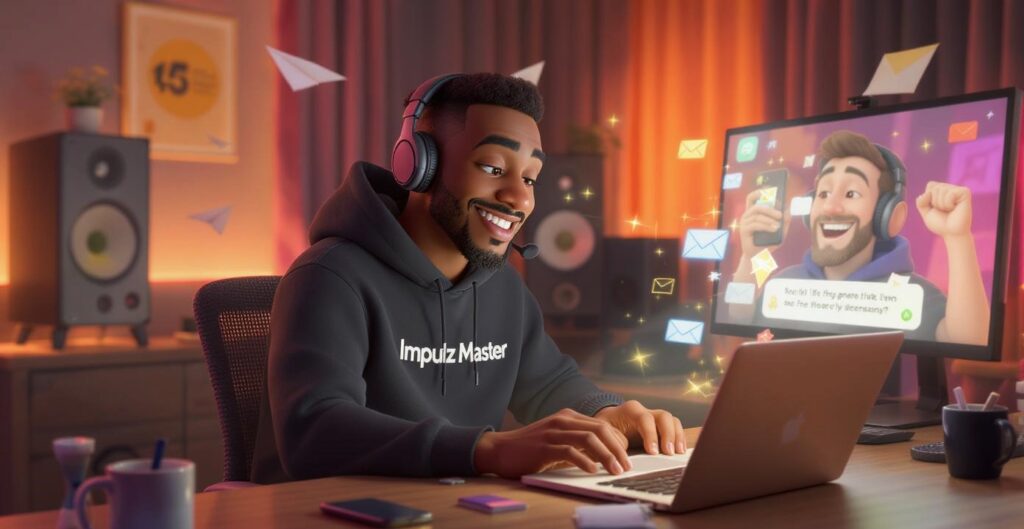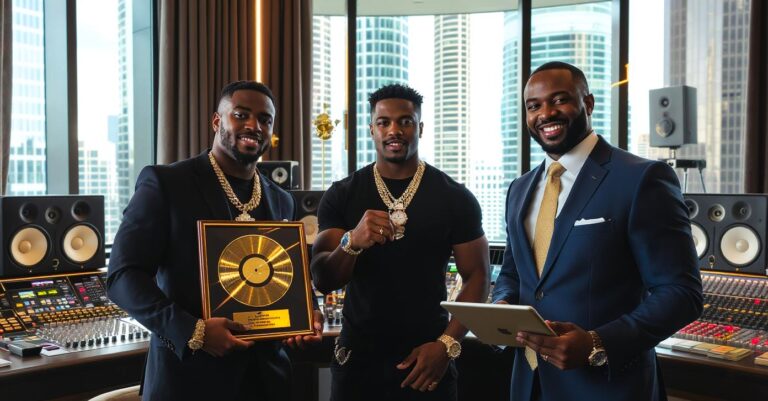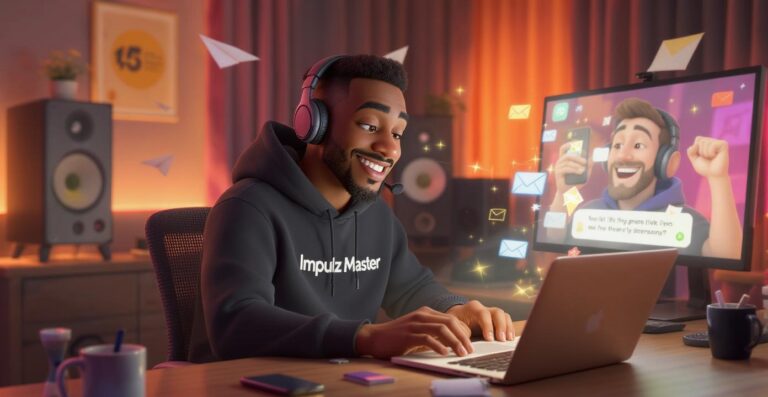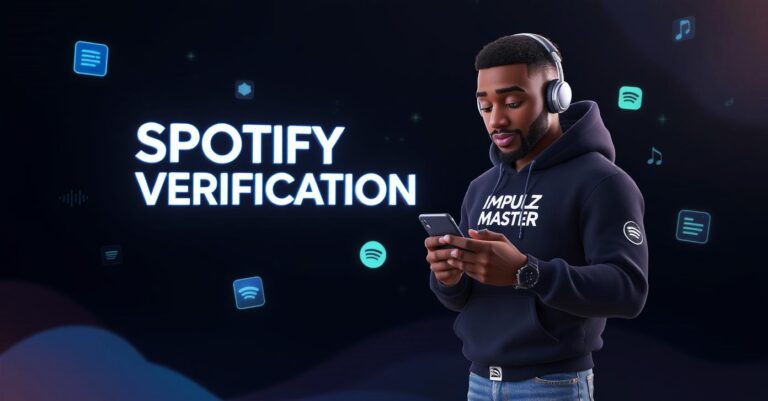
Why Email Marketing Still Works for Musicians
You’re a musician in 2025, chances are you’re pouring a lot of effort into Instagram, TikTok, and Spotify playlists. That’s great — but here’s the truth most artists overlook: your social media followers don’t truly belong to you. Platforms change algorithms all the time, and one small tweak can slash your reach overnight.
Email marketing, on the other hand, is direct access to your fans. When someone gives you their email, they’re saying, “Yes, I want to hear from you.” There’s no algorithm in the way, no competing feed, no worrying about whether your post gets buried.
Think of it like this: social media is the party where you meet people, but your email list is the VIP backstage — only the real fans get in.
The Power of Direct Fan Communication
With email, you control the message, the timing, and the audience. You can:
- Announce new songs or albums the second they drop.
- Sell tickets directly without depending on third-party ads.
- Offer exclusive merch or bundles.
- Share personal stories that help fans connect with you.
How Email Beats Social Media Reach
On platforms like Instagram or Facebook, organic reach is often under 10%. That means if you have 1,000 followers, maybe 100 people will see your post. With email, average open rates for musicians can hit 30–50%, and even those who don’t open it still see your name in their inbox.
So while social media is great for discovery, email is where you nurture and deepen the fan relationship.
2. Understanding the Basics of Email Marketing
Before we jump into the how-to, let’s strip it back to the basics.
What is Email Marketing?
Email marketing is simply sending targeted, valuable messages to a group of people via email — in this case, your fans. It’s not just about pushing sales; it’s about building a two-way connection.
This could include:
- A monthly newsletter with updates.
- Special announcements for upcoming tours.
- Exclusive content that only subscribers get.
Why It’s Important for Artists and Bands
For musicians, email marketing offers something rare: ownership of your audience. If Instagram shuts down tomorrow, you still have your email list.
Other reasons it’s important:
- Direct Monetization – Sell directly without middlemen.
- Targeted Promotion – Reach your superfans first.
- Relationship Building – Share your journey beyond the music.
And here’s a key mindset shift: It’s not about spamming people. It’s about serving them with content they actually care about.
3. Benefits of Email Marketing for Musicians
If you’re wondering whether email is worth the time, let’s break down the benefits that matter most to your music career.
Building a Loyal Fanbase
Your email subscribers are your most loyal listeners — they’re the ones who will stream your music, buy merch, and tell their friends about you.
Think about it:
- Social followers might “like” your post and move on.
- Email subscribers have actively chosen to stay connected.
Over time, consistent communication turns casual listeners into ride-or-die superfans.
Selling More Merch and Tickets
Email allows for direct offers without the noise of a crowded social media feed. You can send:
- Early-bird ticket links for shows.
- Limited edition merch drops.
- Exclusive bundles or discounts.
Because these fans already trust you, they’re more likely to buy.
Promoting New Releases Effectively
When you drop a new single or album, you can:
- Send a countdown series leading up to release day.
- Share behind-the-scenes stories about the song.
- Include direct streaming links on release day for maximum plays.
This builds hype and ensures your release doesn’t get lost in the noise.
4. Choosing the Right Email Marketing Platform
Here’s where many musicians get stuck: Which platform should I use? The good news is, there’s no shortage of tools — and most have free plans for beginners.
Free vs. Paid Email Tools for Beginners
- Free plans are great when starting out, but they may have limits on the number of subscribers or emails per month.
- Paid plans unlock advanced features like automation, better analytics, and more design options.
Start free if your budget is tight, but be ready to upgrade once your list grows.
Popular Platforms for Musicians
- Mailchimp – Beginner-friendly, good free tier, easy to design emails.
- ConvertKit – Popular with creators, great automation, focus on simplicity.
- MailerLite – Clean interface, strong free plan, good for visual templates.
- Sendinblue – Flexible pricing, good for higher volume.
Pro Tip: Choose a platform that integrates with your website or music store. It makes managing your list much easier.
5. Building Your Email List from Scratch
Your list is the heart of your email marketing. The bigger and more engaged it is, the more power you have to move the needle on your career.
Strategies to Get Your First 100 Subscribers
- At Shows: Have a sign-up sheet or QR code at your merch table.
- On Social Media: Offer something in exchange for their email (like a free song).
- Through Your Website: Add a visible signup form on your homepage.
Using Gigs, Social Media, and Website Signups
- Gigs: Mention your mailing list from the stage and explain why it’s worth joining.
- Social Media: Create posts or stories promoting your list with a clear call-to-action.
- Website: Use a pop-up or sidebar form to capture visitors before they leave.
Remember, the goal isn’t just to grow your list — it’s to fill it with people who genuinely care about your music.6. Creating the Perfect Signup Form
A great signup form is your gateway to building a strong fan email list. If it’s dull or confusing, people won’t bother. If it’s clear, inviting, and valuable, your list will grow faster than you think.
What to Include in Your Form
- Clear headline – Example: “Get Exclusive Music & VIP Updates from [Your Artist Name].”
- Short description – Let fans know exactly what they’ll get (new music, early access tickets, behind-the-scenes stories).
- Minimal fields – First name and email are enough. The more you ask, the fewer signups you get.
- Call-to-action button – Make it stand out with text like “Join the List” or “Get My Free Song.”
Offering Incentives to Subscribe
People love perks. Give them a reason to hit that subscribe button:
- A free, unreleased song download
- Early access to tour tickets
- Exclusive video content or behind-the-scenes footage
- A discount code for your merch store
Pro tip: Mention your incentive everywhere — your website, social media, and at live shows.
7. Writing Engaging Emails Your Fans Actually Open
Getting someone to sign up is only the first step. The real challenge? Making sure they actually open and enjoy your emails.
Crafting Attention-Grabbing Subject Lines
Your subject line is like the title of a song — it has to grab attention immediately. Some tips:
- Keep it short (under 50 characters).
- Use curiosity: “Guess what I’ve been working on…”
- Use exclusivity: “For my VIP fans only”
- Be personal: “I wrote this for you”
Balancing Promotion with Value
Nobody likes getting spammed with constant “buy my stuff” emails. The rule of thumb is: 80% value, 20% promotion.
- Value = stories, tips, behind-the-scenes, music recommendations
- Promotion = merch, ticket sales, streaming links
If you build a habit of giving first, your fans will be more willing to support you when you ask.
8. Email Content Ideas for Musicians
Not sure what to send? Here’s a list of proven email ideas your fans will love.
Newsletters
A monthly or bi-weekly update with:
- Recent gigs or events you’ve played
- Links to press features or interviews
- What you’re working on next
Behind-the-Scenes Updates
Fans love to see the process:
- Studio recording sessions
- Songwriting notes or demos
- Sneak peeks of music videos
Exclusive Offers and Early Access
Make your subscribers feel special:
- Early release of new tracks
- VIP ticket pre-sales
- Special merch bundles
Pro tip: Use visuals in your emails — a great photo can make fans click before they even read the text.
9. How Often Should You Email Your Fans?
This is one of the most common questions in email marketing — and the answer is “just enough to stay top-of-mind without becoming annoying.”
Finding the Sweet Spot
- Once a month – Good for busy artists who don’t want to overwhelm fans.
- Every two weeks – Keeps momentum going without spamming.
- Weekly – Works if you have a lot of content, like frequent releases or shows.
Avoiding Email Fatigue
Email fatigue happens when fans start ignoring your messages because they hear from you too often.
Signs you might be overdoing it:
- Falling open rates
- More unsubscribes than usual
If in doubt, start slower and increase frequency once your fans are engaged.
10. Segmenting Your Email List for Better Results
Not all fans are the same — and that’s where segmentation comes in. Segmentation means dividing your list into smaller groups so you can send more relevant emails.
Why Segmentation Matters
A fan in your hometown might care more about your upcoming gig than a fan across the world. Similarly, a new subscriber might appreciate a welcome series, while a long-time fan wants fresh updates.
Examples of Musician-Specific Segments
- Location-based – For sending gig announcements to the right cities.
- Engagement level – Reward highly active fans with special offers.
- Purchase history – Send merch deals to fans who have already bought from you.
By tailoring your emails, you’ll see higher open rates, more clicks, and stronger fan relationships.11. Automating Your Email Campaigns
Automation is your secret weapon for staying consistent without spending hours every week sending emails. Once set up, automated campaigns work in the background, building relationships with fans while you focus on creating music.
Welcome Series for New Subscribers
When someone joins your list, you have their attention — don’t waste it.
A good welcome series might include:
- Day 1: A warm thank-you email with the promised incentive (free song, discount, etc.).
- Day 3: A personal story about your music journey and why you make music.
- Day 7: A curated playlist or behind-the-scenes content.
Release Reminders and Event Countdowns
Automation makes promoting your releases and gigs much easier. For example:
- T-7 days: “My new single drops next week — here’s a sneak peek.”
- T-1 day: “It’s almost here… are you ready?”
- Launch day: “It’s out now — listen here!”
With automation, every fan gets your messages at the right time, no matter when they join your list.
12. Measuring Your Email Marketing Success
You can’t improve what you don’t measure. Tracking performance tells you what’s working — and what needs adjusting.
Key Metrics to Track
- Open rate: The percentage of subscribers who open your email. Aim for 20–50%.
- Click-through rate (CTR): How many clicked the links inside your email. Aim for 2–10%.
- Unsubscribe rate: Keep this below 1% per campaign.
- Conversion rate: How many completed your goal (bought tickets, streamed a song, etc.).
How to Improve Based on Analytics
- Low open rates? Try better subject lines.
- Low CTR? Make your calls-to-action clearer and more compelling.
- High unsubscribes? Reduce email frequency or improve content quality.
Numbers don’t lie — they guide you to better results.
13. Common Mistakes Musicians Make with Email Marketing
Even with the best intentions, it’s easy to fall into these traps:
Over-Promoting Without Building Relationships
If every email is “buy this” or “stream that,” fans will tune out. Balance your content with stories, updates, and value.
Ignoring Mobile-Friendly Design
Over 60% of emails are opened on mobile devices. If your email doesn’t look good on a phone, you’re losing readers.
- Use single-column layouts.
- Keep text short and scannable.
- Make buttons large enough to tap easily.
Avoid these mistakes and you’ll keep your subscribers happy.
14. Advanced Email Marketing Strategies for Musicians
Once you’ve mastered the basics, these advanced techniques can take your campaigns to the next level.
Personalization and Fan-Specific Messages
Use your subscriber’s first name in the subject line or tailor recommendations based on their listening habits. A personal touch can double your engagement.
Integrating Email with Social and Streaming Platforms
- Share email-exclusive content on social to encourage signups.
- Link directly to your Spotify, Apple Music, or Bandcamp releases.
- Use tracking links to see which platform drives the most streams.
Advanced strategies help you stand out in a crowded music landscape.
15. Conclusion – Turning Fans into Superfans with Email
Email marketing isn’t just about selling — it’s about building a community around your music. When you show up consistently in your fans’ inboxes with valuable, authentic content, you’re not just growing a list — you’re nurturing a group of people who genuinely care about your art.
Social media may be the spark, but email is the fire that keeps burning. Start small, stay consistent, and watch your music career grow one inbox at a time.
FAQs
1. Do I need a website for email marketing?
Not strictly, but having a website makes it easier to collect signups and integrate with your other online platforms.
2. What’s the best email frequency for musicians?
Start with once a month, then increase as you have more content to share.
3. Can I email people without permission?
No. Always get explicit consent to comply with laws like GDPR and CAN-SPAM.
4. Is email marketing expensive for beginners?
Many platforms offer free plans, so you can start at zero cost.
5. How do I grow my list quickly?
Offer valuable incentives, promote your signup form everywhere, and collect emails at gigs.



